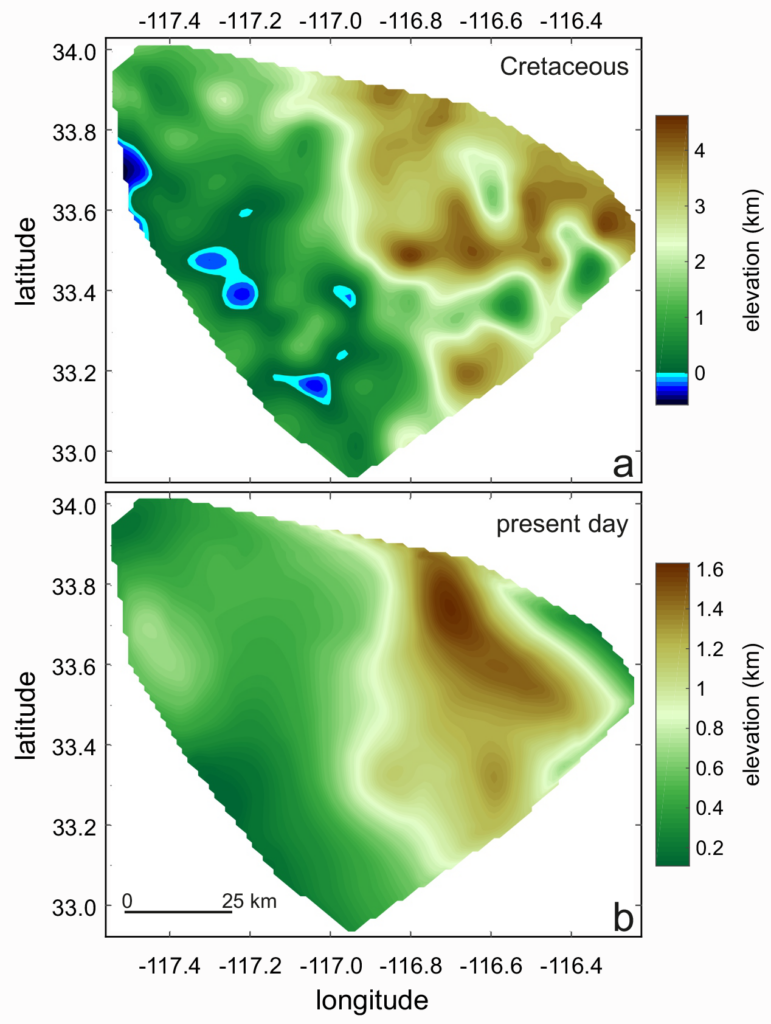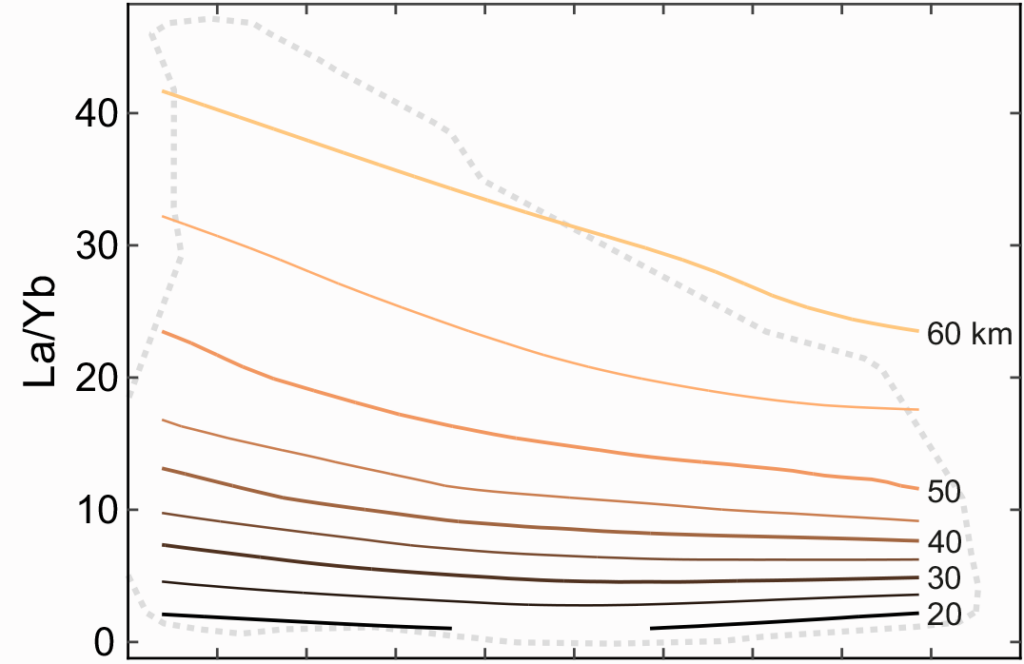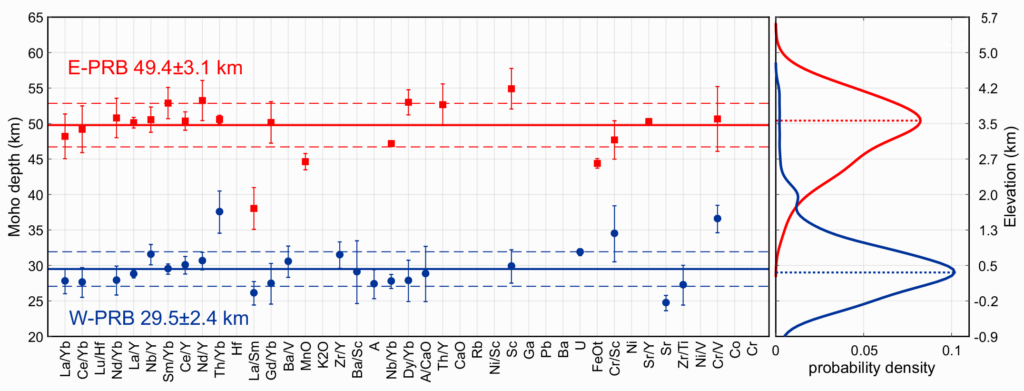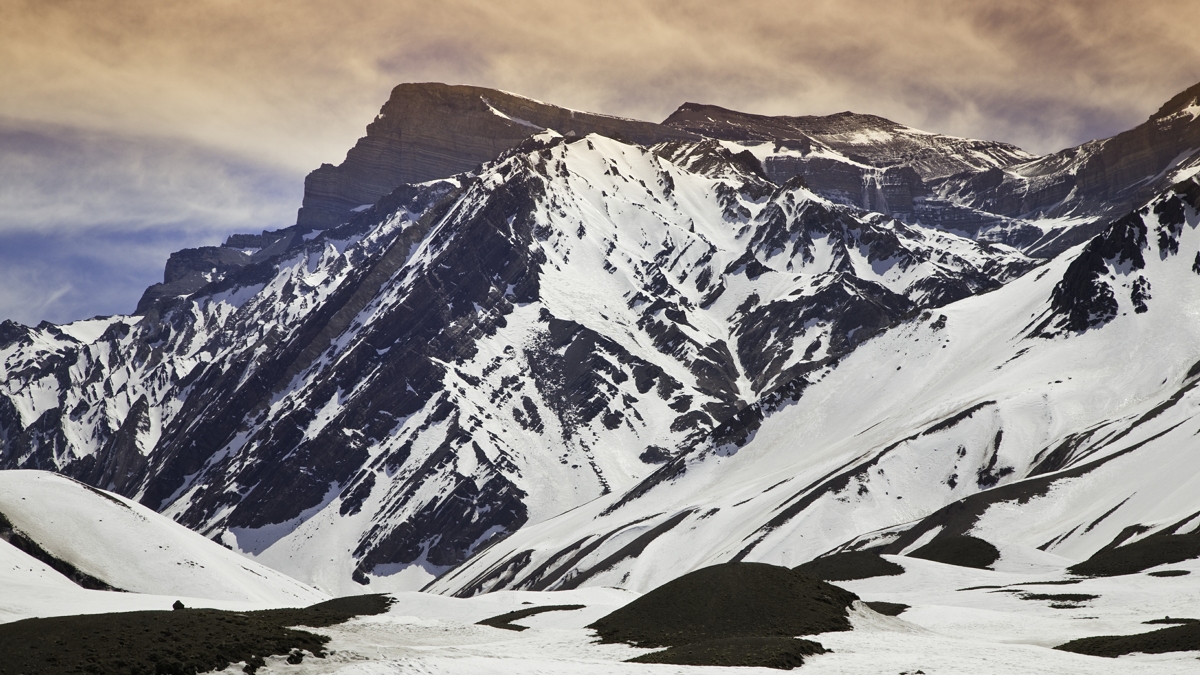Editors’ Vox is a blog from AGU’s Publications Department.
One of the primary goals in geology is understanding the formation and evolution of the Earth’s continental crust, including changes in thickness and elevation. Scientists are able to use the chemical composition of igneous rocks and their minerals to understand how crustal thickness and elevation have changed over time.
A recent article in Reviews of Geophysics explores the use of chemical parameters to determine crustal thickness and elevation. Here, we asked the authors to explain the fundamentals of continental crust, methods that scientists use to determine thickness, and what research questions remain.
In simple terms, what is continental crust and why is it important to understand its composition and evolution?
Chemical differentiation of rocky planets results in the formation of an outer layer, the crust. In this respect, Earth is unique as it develops two contrasting types of crust: a thin and dense, rather homogenous basaltic (silica poor) oceanic crust, which is recycled back in the mantle via subduction in less than a few hundred million years, and a thick, less dense and heterogenous, on average andesitic (relatively silica rich) continental crust that tends to survive for billions of years.
Repeatedly broken up and reassembled by plate tectonics, and reworked by igneous, metamorphic and sedimentary processes, the continental crust extensively interacted with the atmosphere, hydrosphere and biosphere over eons. Unraveling the evolution of its composition, thickness and elevation is not only a fundamental goal of geology, but also has major implications for understanding the evolution and diversification of life, climate, as well as the distribution of various natural resources.
What is the “Mohorovicic discontinuity”?
Named after Croatian geophysicist Andrija Mohorovičić who discovered it in 1909, the Mohorovicic discontinuity or “Moho” is marked by a conspicuous change in the vertical velocity gradient of seismic waves, being considered in both continental and oceanic environments the boundary between crust and mantle.
The observed velocity contrast can be ascribed to major compositional differences: the shallow mantle is vastly dominated by mafic minerals, olivine and pyroxenes, in which seismic waves travel fast, whereas crustal lithologies contain in addition to diverse mafic minerals various proportions of felsic minerals quartz and feldspar, which tend to significantly slow down the propagation of these waves.
In general, the Moho is sharp and clear beneath oceans and old continental interiors and, due to ongoing tectonic and magmatic processes, more gradual beneath orogens developing at convergent plate margins.
Why is it difficult to quantify the thickness of ancient continental crust and its evolution?
Continental crust may be extensively and repeatedly reworked by tectonic and petrogenetic processes and erosion, and therefore its thickness may dramatically change over time. Since geophysical methods employed to constrain depths to Moho rely on directly observable physical properties of earth materials, such as density or seismic wave velocities, they offer valuable information about the present-day thickness of crust (i.e., the depth of Moho relative to surface topography), but are blind to its past modifications.
The only practical way toward quantifying crustal thicknesses and their variations in the geologic past is to find and exploit Moho-sensitive information recorded in crustal rocks with known ages of formation. The greatest challenge in this approach is to identify parameters that can provide Moho depth estimates accurate and precise enough to track potential modifications of crustal thickness over time.
How can igneous rock compositions help constraining crustal thickness?
It has long been recognized that the concentrations of a series of chemical components in lavas erupted from young arc volcanoes along subduction zones correlate with the geophysically constrained thickness of arc crust. Similar correlations have been recently identified for igneous rocks formed in orogens developed along continental collision zones. Moreover, detrital zircons originating from such rocks not only have compositions correlating with crustal thickness but can also be directly used to constrain the timing of their igneous crystallization and may preserve all this information long after their igneous host decayed by weathering and erosion.
Once established for young igneous rocks, these correlations can be applied to old magmatic rocks and zircons with known chemical composition and age in order to quantify Moho depths beneath ancient mountain ranges that experienced thickness variations over time. Importantly, because orogens tend toward isostatic equilibrium, mountain elevations correlate with Moho depths and thus can be also estimated by the same approach.

What is “chemical mohometry”?
By the term “chemical mohometry” we refer to all techniques in which chemical parameters of rocks and minerals are employed to estimate the depth of the Moho discontinuity. Currently, all these approaches rely on empirical relationships observed between young magmatic rocks and the geophysically constrained Moho depth beneath their location.

How have online geochemical databases advanced our understanding of crustal thickness?
Modern online geochemical databases aggregate chemical compositions of diverse rock samples and their minerals studied worldwide, which have been extracted from tens of thousands of research papers published over the past decades and can be exploited for different purposes. In particular, such databases support the quantitative assessment of orogenic crustal thicknesses and elevations from the past in two fundamental ways.
First, they represent an unprecedented source for exploring, selecting, and statistical processing vast sets of data on young igneous rocks, which in combination with various geophysical models allow us to formulate robust global-scale models linking various chemical parameters to Moho depths and elevations of the present.
Second, they host compositions of ancient igneous rocks and zircons which, when plugged into these models, help us estimate the thickness and elevation of orogens from the geologic past in which they formed.

What are the major unsolved questions or knowledge gaps where additional research, data or modeling efforts are needed?
How exactly various mantle and crustal processes contribute to the observed composition versus crustal thickness correlations is still poorly constrained and controversial, and thus chemical mohometry lacks a robust, quantitative petrogenetic foundation. Once quantified, such a foundation will help further refining the existing models and will be particularly useful to predicting the thickness of collisional orogens, to which models developed for subduction zone magmatism are not always applicable, and for which the naturally limited data availability (there are much fewer young collisional orogens than subduction zones) hinders the improvement of specific empirical mohometric models.
Another issue is that, while the online chemical databases have known a spectacular growth over the past two decades, they still miss data on many ancient orogens. Therefore, estimating the thickness of these crustal pieces may imply considerable efforts to gather the required chemical data from the literature and/or new analyses.
—Peter Luffi ([email protected]; ![]() 0000-0001-9536-5405), Institute of Geodynamics, and Geological Institute of Romania, Romania; and Mihai Ducea ([email protected];
0000-0001-9536-5405), Institute of Geodynamics, and Geological Institute of Romania, Romania; and Mihai Ducea ([email protected]; ![]() 0000-0002-5322-0782), University of Bucharest, Romania, and University of Arizona, USA
0000-0002-5322-0782), University of Bucharest, Romania, and University of Arizona, USA
Editor’s Note: It is the policy of AGU Publications to invite the authors of articles published in Reviews of Geophysics to write a summary for Eos Editors’ Vox.

